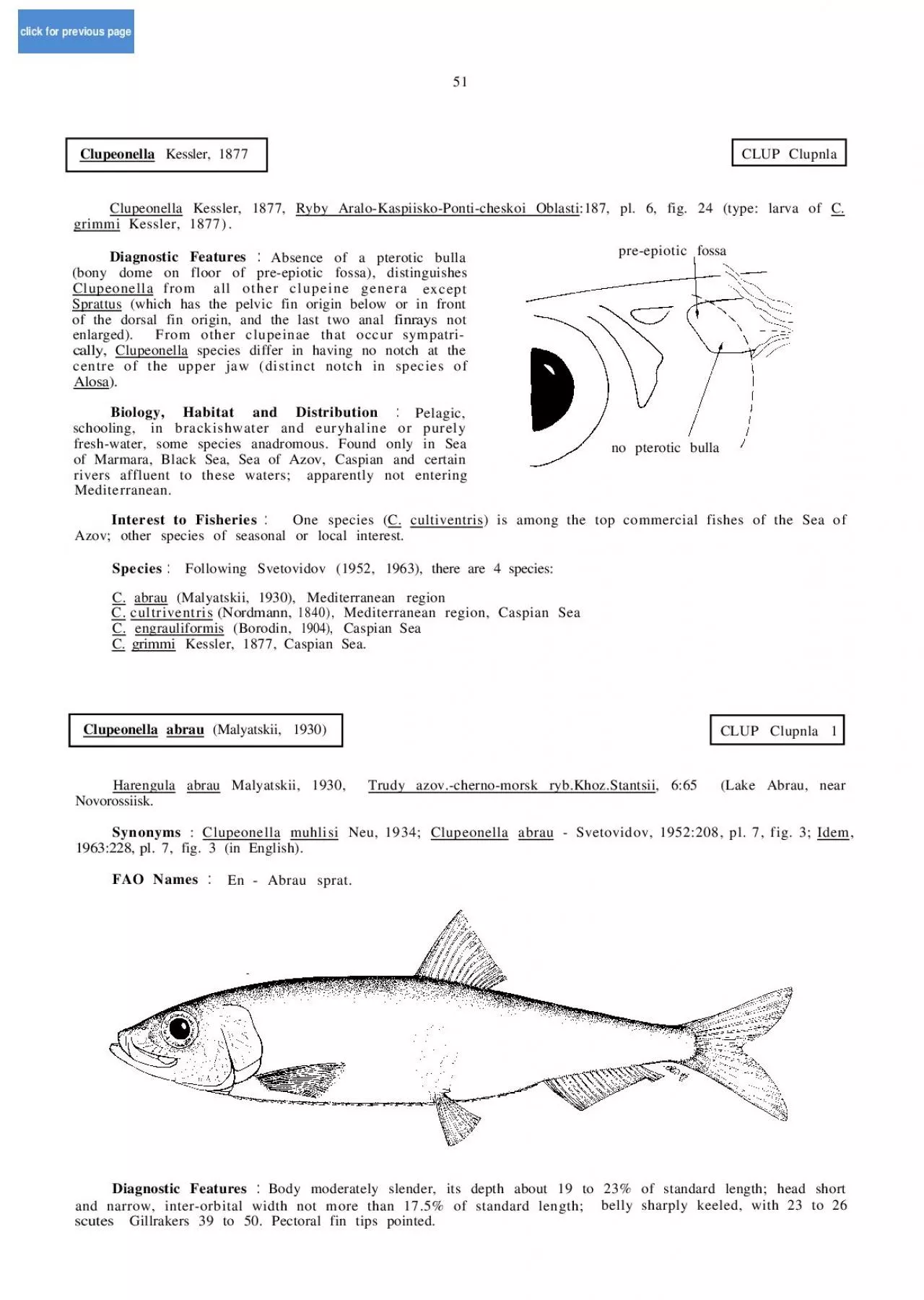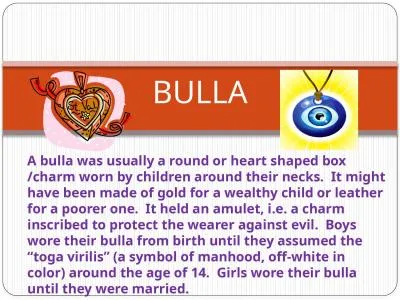PDF-Diagnostic Features Absence of a pterotic bulla
Author : olivia | Published Date : 2022-08-20
51 bony dome on floor of preepiotic fossa distinguishes Biology Habitat and Distribution Pelagic schooling in brackishwater and euryhaline or purely freshwater
Presentation Embed Code
Download Presentation
Download Presentation The PPT/PDF document "Diagnostic Features Absence of a pterot..." is the property of its rightful owner. Permission is granted to download and print the materials on this website for personal, non-commercial use only, and to display it on your personal computer provided you do not modify the materials and that you retain all copyright notices contained in the materials. By downloading content from our website, you accept the terms of this agreement.
Diagnostic Features Absence of a pterotic bulla: Transcript
Download Rules Of Document
"Diagnostic Features Absence of a pterotic bulla"The content belongs to its owner. You may download and print it for personal use, without modification, and keep all copyright notices. By downloading, you agree to these terms.
Related Documents














